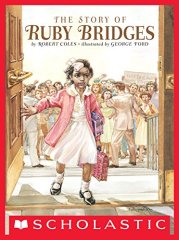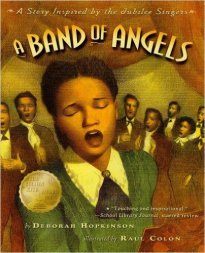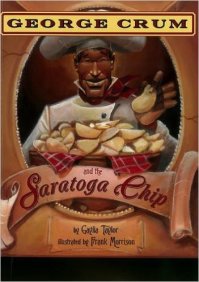Black History Month is almost over, and so far we’ve touched on some activities that we can do in the classroom based on African American heroes. But we still have five more days to celebrate officially. You should be covering some of this in your gen ed curriculum but anyways.
In this post Im going to focus on some books that highlight some African American heroes and their stories. The subject matter of some of these books are a little bit heaver in terms of racism and the effects of desegregation, but all tell stories in a really sweet way. They will not only teach your little chickadees some history but also give them great joy in the telling of them. I really enjoy the books here because they are written to the children’s level and touch on concepts and Black History pretty accurately. I also actually own some of these books from my childhood so those do have some nostalgia for me. Hope you enjoy my recommendations!
Vision of Beauty: The Story of Sarah Breedlove Walker

Description: This books chronicles the story of Sarah Walker, also known as Madam CJ Walker who was the first woman to become a self-made millionaire through selling her own line of hair-care products, made specifically for women of color. This book is recommended for third and fourth graders.
What it’s good for: Use this in your social studies unit or literacy unit. It’s a great way to talk about entrepreneurship and business in a simple way. Have your students come up with something to sell – like a class bake sale – and have them organize everything from who will bring what, how to advertise and when it will be. Even better if you let them chose a charity to donate the proceeds to.

Description: Centered around Ruby Bridges- the six year old African American girl who was on the first to integrate the public school system- tells the story of how faith, determination and perseverance can have big impacts on the world we all share. Best for first grade and up.
What it’s good for: This is great for discussion on racism and prejudice. Have discussions on whether or not it is fair to judge someone based on the color of their skin. Talk about how they can help change things in their community just like Ruby did.

Description: Uncle Jed is the only black barber, in the 1920s. Since he doesn’t have a shop, he travels all over to cut people’s hair. He has a dream of opening his own barbershop, but he has many hurdles in front of him including the financial crisis from great depression, racism, and hospital bills of his niece Sarah Jean. Best for 2nd grade and up.
What it’s good for: Similar to Madam CJ Walker this book is a great way to talk about entrepreneurship and determination. This is a great book to add to your library for leisurely reading or to incorporate into literacy activities.

Description: Though the story is fiction, it does the tell the real life story of Ella Shepard Moore, who becomes the pianist for the Jubilee Singers of Fisk. Fisk was opened with the intent of educating former slaves and to prevent it from shutting down, the Jubilee singers traveled the country singing. Best for 3rd grade and up.
What it’s good for: The Jubilee Singers are known for their beautiful renditions of spirituals. Incorporate some music into your students day by studying the history behind negro spirituals. The Fisk Jubilee Singers are still around! Go on youtube and see if you can find any videos of their recent performances to share with the class.

Description: This book focuses on some traditions that slaves created since they did not have many rights of their own. One in particular being jumping the broom which was their way of signifying an official marriage. Ellen’s parents are finally able to get married in a courthouse, during Reconstruction and Ellen brings the broom to seal the deal the family way. Best for 2nd grade and up.
What it’s good for: This is a great way to talk about the different traditions African Americans have developed over the years and how they gave rights to themselves when no one else would. Invite students to share rituals/traditions they might have with their own family. It might also be fun to think of some ‘traditions’ or ‘rituals’ you all can make for the class.
George Crum and the Saratoga Chip

Description: This book tells the story of George Crum a Native American/ African American man who is credited with inventing the potato chip in 1853. It details the hardships he endures to do so, in a light hearted way. Best for first grade and up.
What it’s good for: This is really good for a fun lesson on cooking! Learn all about the process of making chips and how learn about how they are offered in many different flavors today. If your school allows, bring in all kinds of chips and compare/contrast their flavors!
Granddaddy’s Turn a Trip to the Ballot box

Description: One of the more heart-tugging books on the list tells the story of a boy excitingly watching his granddaddy go to vote legally for the first time. However, granddaddy is turned away after not being able to read, one of the requirements for African Americans to be able to vote. When Michael is finally able to vote, he brings a picture of his granddaddy along with him. Best for first grade and up.
What it’s good for: Great way to incorporate Black History into your discussion of government. Talk about how African Americans were not always able to vote like everyone else, and when they were finally able too, they were met with tests many weren’t able to pass. Discuss fairness with your class and what it means to be fair.
These are just some of the many books that touch on some aspects of Black History, my personal favorites. I hope you can take some into your class and utilize them.
Do you use any of these books in your class? How do you incorporate them? Do you disagree with my list or want to add more suggestions? Tell me in the comments!








